B2B Marketing Data is one of the driving forces for sales teams globally, gone are the days of trawling through the Yellow Pages to try and find new prospects for your business. Nowadays, marketing data can be easily ported and streamed through a Customer Relationship Management (CRM) tool, which allows it to be easily called.
Despite how many businesses use B2B marketing data, it should be noted that many professionals don’t actually know what it is. By reading this article, you’ll become an expert in B2B marketing data and you’ll be able to know what to look out for when buying and using data for your marketing campaigns.
What Is B2B Marketing Data?
The term B2B marketing data gets used a lot within business. Especially when a marketing strategy is being planned. Understanding what it is and what it could do for your business could be a crucial element of your success.
B2B marketing data is a tool that businesses use to grow. B2B simply stands for business to business. So, B2B marketing data is business-to-business data that includes contact information. There is another kind of marketing data you might have heard of. B2C marketing data is business-to-consumer data. It is very similar, but not to be confused with B2B marketing data. Down below is an example of some of the information that can be found in B2B Marketing data.

The lists found in B2B marketing data are made up of the contact information of possible customers. Therefore, they provide valuable opportunities to grow your audience. If you have an opportunity to invest in B2B marketing data, take it. It could help take your business to the next stage in its growth. There are things to consider before buying any marketing data lists. It’s important to know what your business needs, and how to buy smart. This article should help you get to grips with what B2B marketing data is. Then you will be able to invest informed and aware.
Where Does B2B Marketing Data Come From?
We have looked at what marketing data is, but we haven’t looked at where it comes from. Data providers don’t just make up B2B marketing data lists. The data on them comes from somewhere. It is interesting to know exactly how the B2B data lists you buy are made. Where they come from and what puts them together.
Some might find this unnerving, but it comes from you! All of us online partake in adding to these datasets. However, your data cannot be collected or shared for B2C data lists without your explicit consent.
Public Vs Private Data Collection Sources
This is part of one way of data collection. Public sources such as websites, news articles and public social profiles. There is another method of data collection. This is private data collection. These sources include things such as financial and market intelligence, paywalled websites, and DaaS providers. DaaS stands for data as a service.
Private data collection sources are different as they can only be accessed with permission or payment. Essentially, private sources are not accessible to the public, whereas public sources are. Hence the titles of the sources. Public data sources can be accessed by anyone and can be seen without permission or payment.
Sorting Data
Different B2B data lists are of course gathered from different places. This is because often, a data set is industry specific. Meaning that the data on the list will be most useful to a business working in a certain industry.
Location
Once enough data is gathered, into can be organised into B2B data lists. Data can be gathered from all over the Internet. This means that those businesses (or consumers) whose data it is, can be from anywhere in the world. Therefore, data lists are often split geographically.
For example, if a brand is trying to reach a certain consumer, they need that audience to be on the list. A business selling conservatories may not have the best sales luck if their dataset includes only homes in Canary Wharf. If you are looking for data on businesses that work in the countryside, you need the right data. Maybe in the farming industry as you supply farming equipment. Again, you would not be pleased to receive data purely from businesses operating in Canary Wharf London.
Once the locations of the data are sorted, it can make a B2B data list much more profitable. There are of course other ways in which data lists are sorted. It can be based on location, and other things too.
Staff
You can also have the breakdown of staff within the B2B data lists. This can be useful as it can tell you the names and contact details of those with power. If you are trying to sell something, you need the contact details of the decision-makers. Who is in charge of purchasing things on behalf of the business? You don’t necessarily need the contact details of a store salesperson. Relevant business data will be collected into one B2B data set so the business buying it will find it useful.
Why Do Companies Use B2B Marketing Data?
Now we understand what B2B marketing data is, we can understand why companies use it. B2B marketing data is part of an expanding industry. Those who want to enlarge their audience pool are turning to B2B marketing data to aid them.
Companies use B2B marketing data because it is quick, cost-effective and simple. In essence, this form of marketing can be much easier than traditional methods. Print adverts, referrals and networking are all great ways to market a brand. However, it can be time-consuming and not very effective. Spending time carrying out unsuccessful marketing methods is disheartening. It also takes time away from you that you could spend on other areas of your business.
With B2B marketing data, you can buy a pre-set list of names and contacts. This immediately saves you time and resources. Depending on your previous marketing strategy it could also be much more low-cost.
Time and money aside, B2B marketing data is also just an easier way of marketing. Having all the data you need, to hand keeps things organised. It can be stressful and daunting to complete a marketing plan, but when everything is in order, things are more manageable.
These are some of the reasons why so many companies have turned to B2B marketing data. It is cost-effective, quick and simple. It is also hugely successful in growing businesses and making contacts.
The Types of B2B Marketing Data
There are lots of different types of B2B marketing data available. What one business needs, won’t be the same as the next. It is vital to know what you need in order to be successful when buying B2B marketing data lists.
To know what you need, you must know what is available. In this article, we will look at only B2B marketing lists. But within that, we will look at telemarketing and email marketing. We will also cover energy renewal data, telecoms renewal data, and insurance renewal data. But also we will look at data protection laws and GDPR as well as USA’s federal and state legislation.
After looking at all these types of B2B marketing data, hopefully, you will have an idea of what you need. You will also know how to go about obtaining your own B2B marketing data list.
B2B Telemarketing Lists
The first kind of B2B marketing data we will look at is B2B telemarketing lists. If you know anything about B2B marketing data, you will already know that these lists are all about lead generation. If not, lead generation is simply the process of gaining or creating customers for a business.
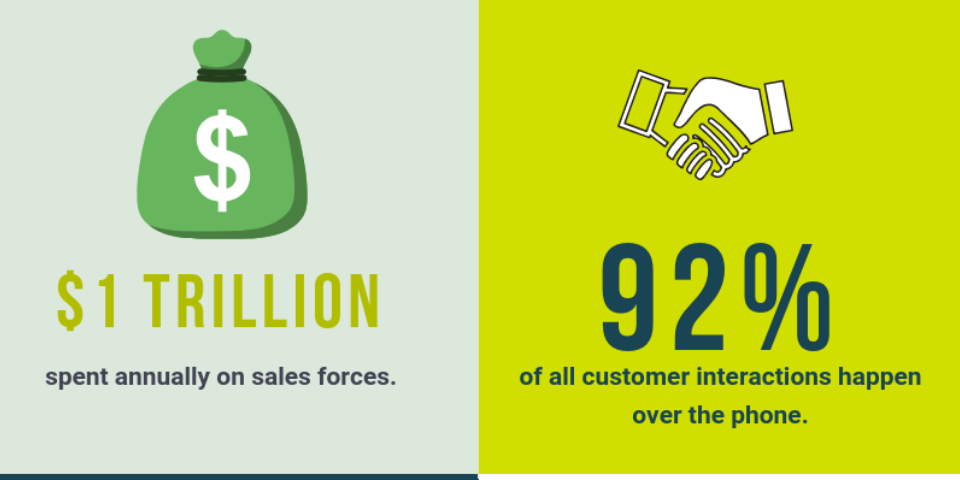
B2B telemarketing lists are made up of phone numbers of relevant businesses and companies to call. Lists also contain the company’s name and other information. Telemarketing itself is marketing a product or service over either the telephone or the internet. The call or contact consists of the promotion of a new product, service or even brand. The aim is to create an audience of interested potential customers. This is lead generation.
There are ‘do not call’ lists in different countries that protect numbers from spam. We will look at data protection later, but it is relevant here. It is key to not call any of the numbers on these lists otherwise you could face fines or legal repercussions. However, do not call lists are often mainly consumer numbers as opposed to business numbers. If you are purchasing telemarketing data lists in the right way, this shouldn’t be something to stress about. Good B2B marketing data lists for telemarketing should be checked by the provider. They should not include any do not call numbers.
UK B2B Telemarketing Lists
B2B telemarketing lists in the UK have changed over the years. Using telemarketing list providers is the way British businesses are carrying out their telemarketing strategies. In the past, the yellow pages were used. But flicking through pages and pages of phone numbers to have an unsuccessful call proved often a waste of time.
With telemarketing lists, British companies are now creating leads and offering their services to businesses in a matter of minutes. It is crucial to consider the tone of voice when calling other companies. You are using their time and it is important to be aware of that.
Be confident and have a plan before the call. Explain why you are calling as early on as possible. Then you can work on persuading the person on the other end of the line, why they shouldn’t hang up. There are loads of tips and tricks online that can help you become a competent telemarketer. If you want to invest in B2B telemarketing lists, read some advice before you jump into the calls.
USA B2B Marketing Lists
Laws around telemarketing lists will differ between countries. So it is important to do your research before buying. We will look at Federal and State Legislation in the USA later in the article. Make sure to keep reading to learn more about this.
If you are calling from another country, be sure to keep in mind time zones. Check what time the country you are calling is in, to be sure it is in calling times. UK calling times are 8 AM until 9 PM on weekdays and 9 AM until 9 PM on Saturdays. In the USA, weekday times are also 8 AM until 9 PM, but weekends are 10 AM until 6 PM.
There are some tell-tale signs of a poor telemarketing list provider. Read through our article to get a more full understanding of what to look out for.
B2B Email Marketing Lists
B2B email marketing lists are the next marketing tool in the realm of B2B marketing data. It is quite similar to B2B telemarketing lists. Lots of the above still apply. Some believe that email marketing is the best way to market business to business. It is the preferred method for some because it can be more formal than a phone call. With email marketing, you can also reach a much larger audience much quicker. So, it is arguably more time-efficient.
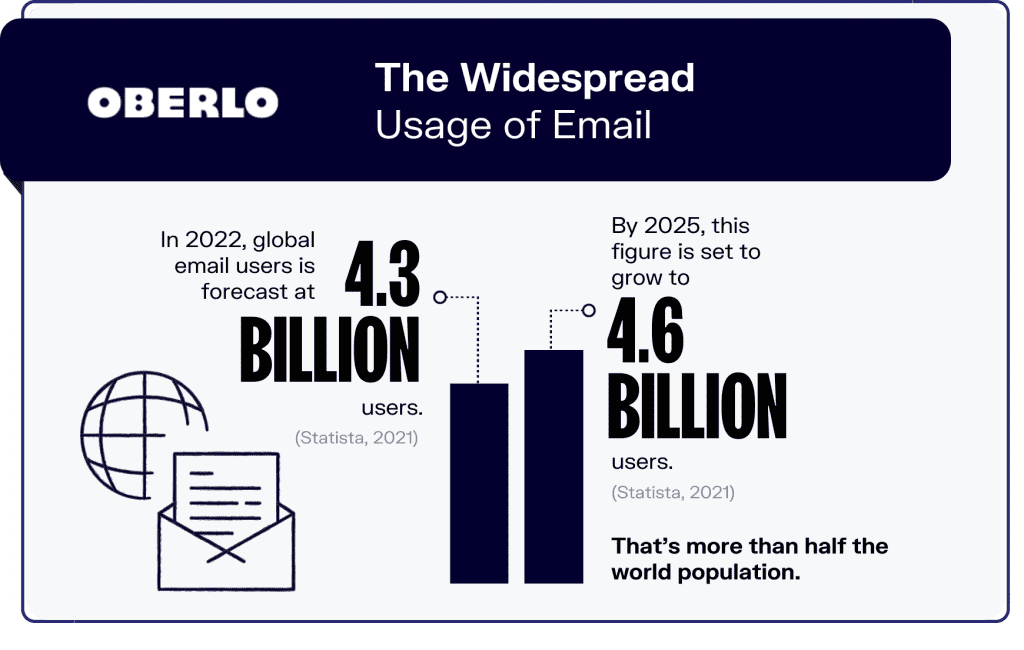
Once you have built an audience or bought a B2B email marketing list, you have immediate access to vast numbers of businesses. If you plan an email marketing campaign, you can build relationships over time. Use a strategy that will inform your audience why they should work with you and do so on a continual basis.
You can also share visual content and facts and figures that might be too difficult to consume across the phone. Emails can include exciting visuals and have in-depth details about your business. This is because you are not time-limited. Companies can re-read your email and follow links to your page if they please. Whereas this can be more challenging on a call. It is still one of the most popular B2B marketing data tools. If you want an in-depth understanding of why, and why it might be good for your business, read here.
UK B2B Email Marketing Lists
The best way to complete email marketing is by having a set plan. Once you have bought your B2B email marketing lists, you can understand your user profile. Then, you can tailor your campaign to the interests of your audience. This way, your audience will be more engaged, then more likely to respond. When you have an interactive campaign, it is successful. Business deals and sales can be made on the basis of an engaging and successful email marketing campaign. If you want to learn how to create a database marketing campaign, read our article on it.
Just like before with telemarketing, you must be careful when working with data. All data must be handled and worked with care and understanding. The EU law GDPR should always be at the forefront of your mind when looking to buy data. This will be covered in more detail later in the article, but it is worth remembering.
At AccuraData, we offer email marketing services. If you are interested in buying B2B email marketing data lists, give us an email.
USA B2B Email Marketing Lists
Email marketing lists are used across the globe. The USA is no exception and it is still a popular marketing tool, just like it is in the UK. Email marketing has one of the highest return on investment rates.
There are different kinds of email marketing that can engage your audience. The first is the familiar newsletter. Having a writer who can create content for your subscriber list on a monthly basis will help here. The companies that receive the emails will get to know your business in an informal way, in their own time. This kind of email marketing is also cost-effective, as one piece of copy can be sent to your whole B2B mailing list.
Another kind of email marketing is retention emails. These are often used for B2C marketing schemes, but can also be used for B2B. They are simply emails requesting feedback. This is a direct way of asking for engagement. If you receive feedback from a customer, you can implement the advice to improve their experience in the future. Building this communication link creates a relationship of trust, which is always beneficial in B2B.
The US does not operate under the same laws as countries in the European Union. However, there are still rules. There are lots of laws for data protection in the USA and some coming soon. The Consumer Data Protection Act (CDPA) is a new law coming into force in January 2023. It was passed in Virginia. This law will act in a similar way to the EU’s GDPR data protection law.
B2B Energy Renewal Data
B2B Energy Renewal Data is a dataset that can be used by commercial energy brokers and suppliers to better target business energy customers whose contracts are coming up for renewal. This data contains the telephone number so you can call in and the energy information contained in the data allows you to target specific suppliers and Contract End Dates. This simplifies the sales process and ensures that energy sales teams can spend more time focusing on customers that they can actually close. Instead of going for a scattergun approach.
B2B Telecoms Renewal Data
B2B Telecoms Renewal Data is similar to the previously mentioned Energy Renewal Data. It informs callers of which provider the customer is with and any other information that is of relevance to help them to get a better deal on their telecoms, such as landlines, handsets and more.
B2B Leads
What Is A Lead?
There is a difference between data and leads. To understand what each one can do for you, you need to understand what leads are. In plain terms, a lead is a potential customer. To be defined as a lead, the individual/business must have expressed interest in your business and what you sell.
It is considered an expression of interest when contact details have been shared by the individual or business. This could be a phone number, an email address, a postal address or social media account on any platform.
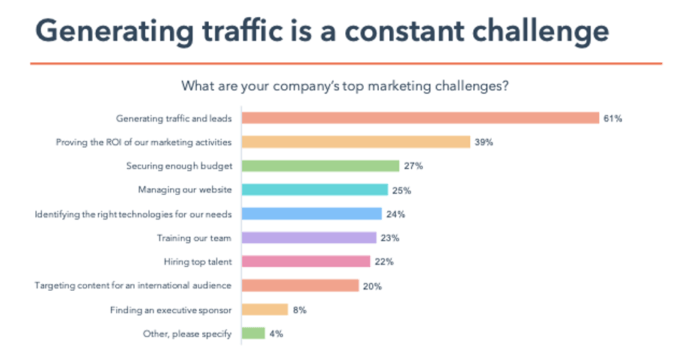
This is different from data because data lists are made of potential leads, not definite ones. The people whose contact information is on a data list might not want to buy your product or service. Whereas a lead is an individual, business or organisation that is interested in what you offer.
B2B leads are pre-qualified prospects that want to use your services or buy your products.
Lead Speed
One of the key benefits of having leads with other businesses is that making deals can be so much quicker. In this way, leads are better than data as the interest is pre-set and therefore a transaction is pre-established.
Once a business has shown legitimate interest in your service or product, you don’t need to spend time persuading them to work with you. They do not need to learn why they should buy from you, because they already want to.
Leads are more complex than data. You can’t just gather them all in one list. Leads can be generated in so many ways. One way you can do it is by using a call centre. Call centres are a tool that can be used by businesses to make and receive large numbers of phone calls. Consumers can ring up to inquire about services and products.
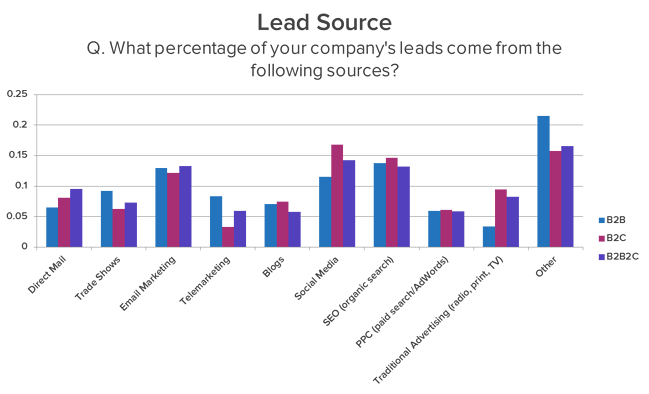
Another way to generate leads is by using general online content. Using your website can be a passive way of creating leads. If you have a lead-generating landing page, you could obtain new contact details without having to do any work. What is a lead-generating landing page? It’s a page that asks for contact details instead of just a layout of clickable tabs for your website. Often, they offer a deal or some incentive that will persuade the user to fill out their contact information.
Similarly, blogging can generate leads. This is could be considered passive, but it does require having sharable content. If you write content that markets your product or service to the right audience, you have already made a pitch. Using a CTA (call to action), you can push readers to become a lead. For more information about how to use your blog for lead generation, read here.
Lead generation can take place in so many different areas of business. It could be face-to-face, at live events. Networking at local business events can help build invaluable B2B leads.
Pricing
Another difference between leads and data is that leads are often a lot more pricey. Lead generation can be an expensive process.
It can get costly if you are trialling different methods. Hiring a content writer for a blog or email content, using call centres or attending events. These can all eat into your budget. Potentially costing more than a list of B2B marketing data. So, consider if you are at the stage where you can set aside enough money to spend on lead generation. It is important to know your budget.
Leads can also be unreliable. This ties into the next point. Not everyone who says they are interested will actually buy. It is one thing to state an interest in a product or service, but it is another to buy it. Therefore, don’t be tricked into thinking every lead means a sale. Be wary of overconfident predictions. Businesses may change their minds at any point.
Lead Scammers
Be aware that just like any business, lead providers could be scamming you. If someone is selling the dream, it might be too good to be true. There are companies that are selling non-leads. Doing research will help here. If you understand the market and what many providers offer, it is easier to compare and spot red herrings. Try to be sure of what you are buying. You could ask for testimonials, or reviews online.
However, there are other ways you may feel scammed when buying leads. If you receive leads you deem substandard, you will feel ripped off. But what you consider to be a lead, may not be the same as the next business. So before you start buying, get an idea of what you want. Then you can approach providers with a clear request.
Things to consider include what budget the business has to spend, and do they already use a similar product or service? Are the leads actually the decision-makers in the company? If not, they may have no access to the budget. Therefore, could be wasting your time, as they simply don’t have the power to buy anything from you. Go in with a plan to avoid getting scammed.
How To Make Sure You Buy Good Marketing Data
Now you understand what kinds of B2B marketing data is out there, you can start thinking about how to buy. Making sure you buy good marketing data is crucial. Like any part of business, you can get scammed or ripped off in the B2B data list sector.
There are small things to look out for that could be a telltale sign of a poor data list provider. Once you pick up on these, you will have all the tips and tricks you need. These will then equip you to find the right data list provider for your business.
What to Look Out For
Pricing
A key sign that a provider is not the right fit for you is the price. If you feel your quote is overcharging the data you are buying, then don’t invest. However, if you are not familiar with the industry, there is no way of knowing if you are being overcharged or not.
This is why it is important to do some research. Check a few providers and ask for quotes for similar data lists. Compare what is on offer and the prices that match the offers. If there is a provider with a price that stands out for being too high, you could be overcharged. Make sure you have a budget when planning your marketing strategy, this way you will quickly learn what data lists you can afford.
Compliance
Another sign that a business is not offering good marketing data is the refusal to show compliance documentation. Whatever country you operate in, you should be able to see documents that prove the provider follows the law. Compliance information should be handed over when requested. The lack of documentation is a red flag to avoid. Do not buy data from a business that could end up causing you legal issues.
There are other signs that a business might not be right to buy data from. If you want to read about these, an article on our blog explains how to spot bad telemarketing list providers. The rules in that article apply to email marketing list providers too.
Accuracy
A final thing to watch out for, is accuracy. This is a quick giveaway of either a good or poor provider. There are things that can signal poor accuracy from a quick glance. If the data is old, it is more likely to be out of date and therefore inaccurate.
When you are shopping for your B2B marketing data list, you might notice that some businesses will overpromise on accuracy. This is more difficult to spot, especially if you are new to the market. If you don’t know what you are looking for, you might be tricked. This is just another reason to shop around and do some research into the market before handing over your money. However, if there are claims to have 100% accuracy, this could be over-confidence. Data changes very quickly.
Keep data replacement in mind. If you find inaccurate data in your B2B marketing data list, you will want to know if your provider will replace it for you. Some businesses do and some don’t, either refusing or struggling to do it. The accuracy of the list is what gives it value. So make sure you are getting what you pay for, to avoid disappointment.
Who Are You Buying From?
Who are you buying your B2B marketing data lists from? This is linked strongly to accuracy, but it is slightly different. This is because it may be unknown to the provider and not their fault.
It is important to consider who you are buying from. Are you trading in the EU or maybe the US? Wherever you trade from, check where your providers trade from. If you are a business from a country in Europe, you will work with dates set out DD/MM/YYYY. Whereas a US business will operate with MM/DD/YYYY dates. Therefore, if you work with different setups for data, it might get confused in translation. Even if it is accurate for the provider, you need to be sure it will be for you too.
Therefore, this is partly down to you. Know who your provider is and where they are based. That way you can avoid innocent mistakes that could result in annoying inaccuracies for your business.
- Some businesses will overpromise on accuracy.
- The older a dataset gets, the more likely it is to be inaccurate.
- Some companies refuse/struggle to replace inaccurate data.
- Accuracy is important as you’re making sure you get what you pay for.
How To Get GDPR-Compliant Marketing Lists
Knowing how to get GDPR-compliant marketing lists starts with understanding what they are. When buying any datasets, you need to be sure of what you are buying. B2B marketing data is no different. It can seem complex and stressful, but if you know what to remember, investing doesn’t need to be scary.
When you are buying data lists, you are buying personal data. This can include anything from telephone numbers to email addresses and company bios. Personal data is what is protected by GDPR. So what is GDPR?
What is GDPR?
In the UK and across Europe, there are strict data protection laws. GDPR is a set of laws that protect personal data and privacy. GDPR stands for General Data Protection Regulation.
In 2018, the data protection act was put in place across Europe. So, all organisations, businesses and companies must follow these laws. General Data Protection Regulation comes under the 2018 Data Protection Act.
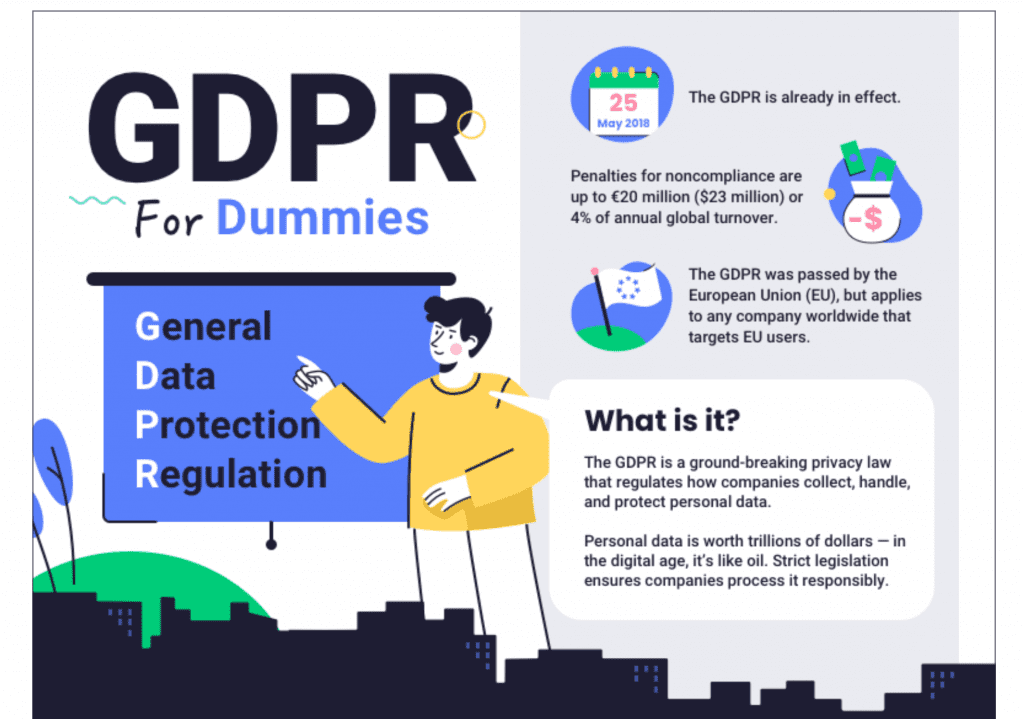
The laws are enforced to protect privacy through the use of data protection principles. It was made to create an umbrella of data protection across Europe. There are several data protection principles, which are all set out and explained here.
There are lots of buzzwords that get used in relation to GDPR. If you want to read up and understand all of the jargon linked to data protection, read here. The link takes you through the definitions of twenty-six words commonly used in GDPR practice.
Why Do You Need GDPR Compliance?
Now you understand what GDPR is and the laws around data protection. You can put two and two together to figure out how important it is. Following the general data protection regulations is key if you ever want to work with data. If any company, organisation or business fails to comply with GDPR, they could face legal action.
This can be quite serious. Fines can be huge. They range vastly but can reach up to twenty million euros. However, checking GDPR compliance doesn’t have to be scary. As long as you are careful and understand what to look out for. When you are, you can be assured that you are investing right.
Also, GDPR isn’t just about ticking boxes. It is about genuinely caring about your customers. If you handle data, you have a level of care to respect that data. If you treat your customers’ personal data in the correct way, you are more likely to build a good relationship. Building trust between businesses creates invaluable alliances that can help your business grow. Investing in GDPR-compliant B2B marketing data is a sign of an accomplished business. It can take your brand to the next level and help you reach a much wider audience. When you have created strong B2B links and expanded your reach, you’re on track for higher sales, deals and profits.
How To Get GDPR-Compliant B2B Marketing Lists
We have a whole article dedicated to explaining how to source GDPR-compliant B2B marketing lists. If you want an in-depth piece on the topic, read that before investing.
One way we all find the best deal is by shopping around. Try different suppliers. Ask for quotes. Find out exactly what is on offer. Then make a list of all the different suppliers. When you have it set out in front of you, it is easier to work out what might be the best deal for you. This way, you can also check how suppliers operate.
When you ask for quotes, also ask for GDPR compliance documentation. All B2B marketing data suppliers should also be registered with ICO. This stands for Information Commissioner’s Office. In our article mentioned above, this is explained in more depth. But simply, you should be able to see a supplier’s compliance documentation, and also find them on the ICO search engine. All you need is the registration number, name, address and postcode. Then you can find out if they are registered or not.
B2B Data Enrichment
Data Enrichment, also sometimes called Data Appending, is the process of taking your own data that you hold in-house and combining it with data from a third-party to either create a more detailed or more accurate dataset. For example, if you had a regular list of business email addresses, but no phone numbers, you could approach a data company to have them enrich your data by adding the telephone numbers for those companies into your database. This leaves you with a more comprehensive dataset that provides more utility for your business. Here are some of the main benefits you can reap when enriching your data.
- Improved Customer Segmentation.
- Better Lead Management, Leading to More Conversions.
- Better Prospects for Personalised Communication With Clients.
- Data Management Cost Savings.
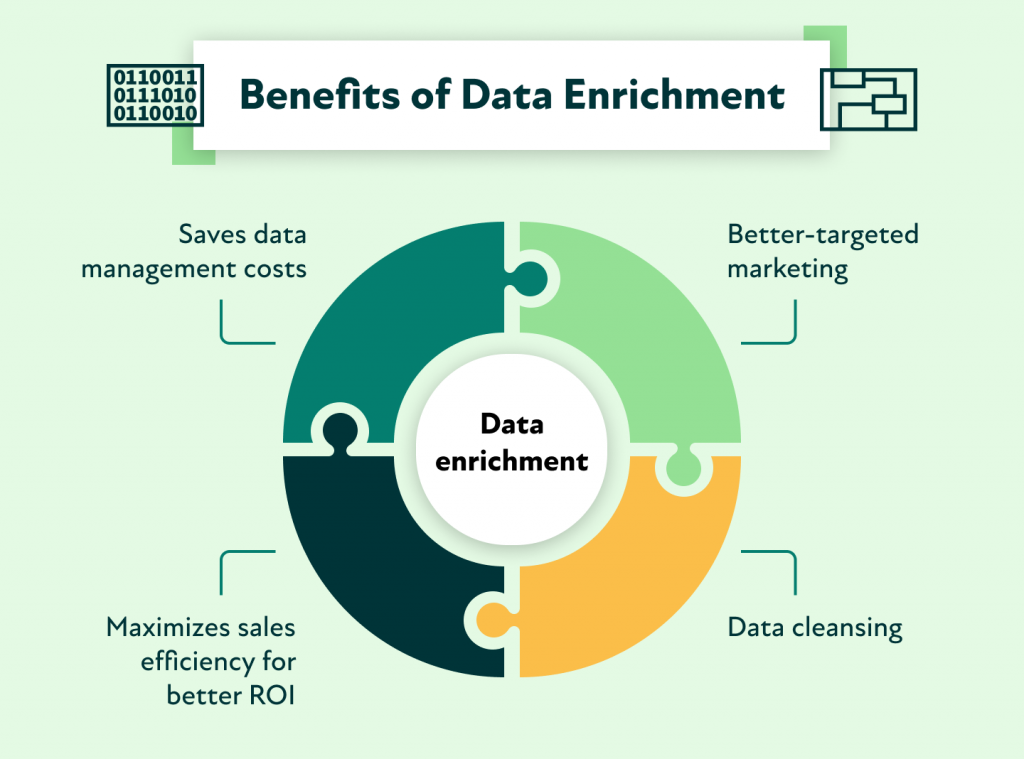
When you’re looking to enrich your database with an external source, you must be incredibly vigilant and practice due diligence. If the data source you’re using for the enrichment isn’t accurate, you’ll find yourself wasting money and time on a dataset that doesn’t have much more intrinsic value than the one you started with. Furthermore, enrichment may involve the transfer of some of your data to this third-party, this is a huge risk and requires a stringent documentation and compliance review to ensure any transfers are carried out in the confines of existing data protection law.
There are a variety of software tools on the market that can help you with enriching your data within their platform. They achieve this by generally having you upload your database to their system and then, at your leisure you can request that your data be enriched along the parameters that you set. It should be noted that these solutions can be incredibly expensive and may not be suited to smaller businesses, particularly when many software solutions require you to buy additional ‘credits’ to carry out enrichment and cleansing at mass. Furthermore, there can be additional compliance and security considerations when storing your database with a third-party system.
Data Enrichment is one of the many data-related services that our team carries out at AccuraData, we’re able to provide this service by leveraging our numerous internal databases of accurate data combined with our close relationships with the data market’s most reputable and effective companies- of course, we’re one of them! So if you’re thinking about getting more out of your existing database, give us a call after you’re finished with this article.
Data Cleansing Services
Data cleansing is the process of taking old data that may be inaccurate, duplicated or corrupted and replacing that data with up-to-date information. For example, data should be cleansed against the TPS register every 28 days.
If you have invested in data or are thinking about it, also consider data cleansing services. When you buy data, it should be cleansed against the TPS register. Data should be cleansed every twenty-eight days because it is ever-changing.
The TPS register is the telephone preference service. It is the UK’s do not call list. It is crucial that any data on your list is not part of the TPS register. This is because it is a legal requirement to not call these numbers unless you have consent.
Data cleansing ensures that your data is compliant with the TPS register. It also removes repeated data, inaccurate data or corrupted data. This way, your data won’t be causing you a legal risk and it also saves time and money. Data cleansing has a ripple effect. Saving time and money is just the tip of the iceberg.
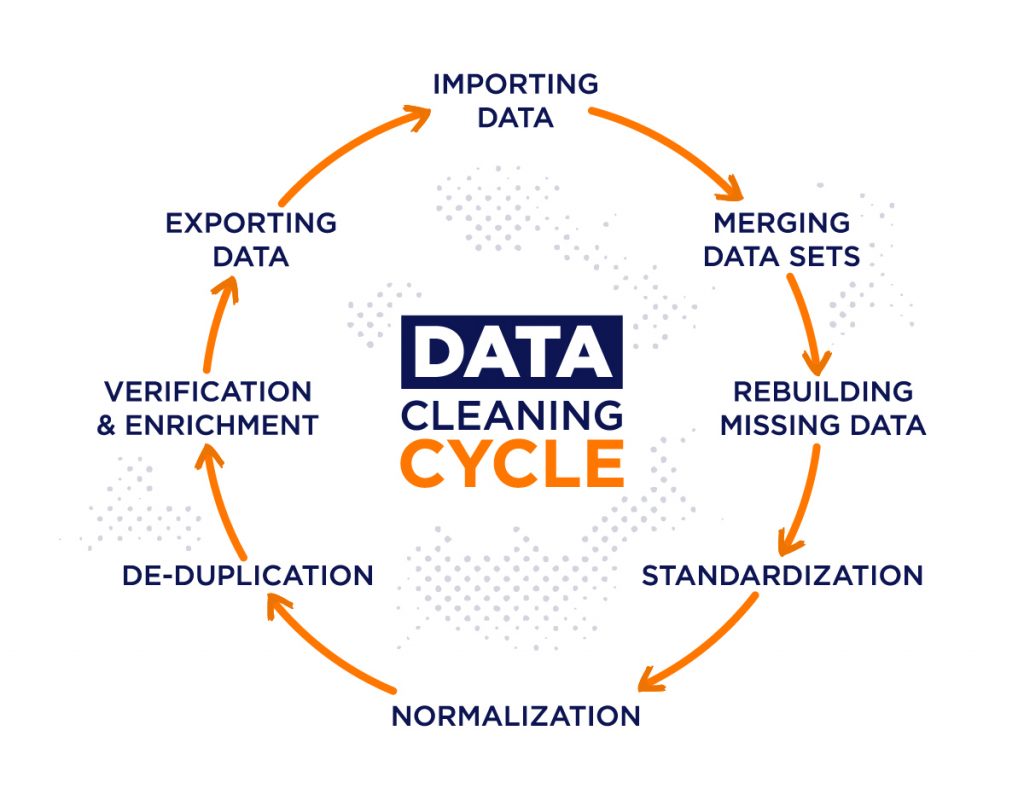
When your data is cleansed, you or your staff won’t be sifting through duplicated details or old numbers. Time is cut down and staff can be more efficient whilst working. Cleansed data can also improve customer relations as reliable and continuous bonds can be formed with the right contact details. Investing in cleansing your B2B marketing data can also help improve decision-making. If you have good data, it enables the business to form accurate analytics.
Think of it as an electric toothbrush. It keeps that quality clean feeling all year round, not just for a few days. Using data cleansing services can keep your data healthy and performing at its best.
Some data list providers also offer data cleansing services. So, if you work with a good provider, check if they offer the service too.
What Happens in Data Cleansing?
We already know what data cleansing is, and what it does, but not how. When you use a data cleansing service, you might want to know the process that the data goes through.
The process starts with a holistic approach. An overview is gained of the data set. So an understanding of what the data is and is made up of is learnt. This enables the cleansing process to start because inaccuracies become easier to spot. Simply, this is data analysis.
Next, is the step where the inaccurate data is identified. The cleansing process begins as the data can be cross-checked. Comparing it back to official sources allows mistakes to become clear. False data is highlighted and any missing data can be filled out.
After this, the next step is updating the data. If details have changed and things need to be corrected, that happens here. For example, if a number was previously on the list but now is part of the TPS register. If this is the case, the number needs to be removed. It could also be other simple changes such as a business might have moved the location of its headquarters.
Once all of the inaccurate data is removed and any new data is filled out, a quality check can take place. This should identify if there are any rogue duplicates, or inconsistencies left. This is the whole data cleansing process, leaving any list filled with quality data.
UK/EU: The GDPR and The DPA 2018
As explained above, both the UK and all countries in the European Union must comply with GDPR.
The key data protection principles include lawfulness, fairness and transparency, purpose limitation and data minimisation. The principles also include accuracy, storage limitation, integrity and confidentiality and accountability.
GDPR or General Data Protection Regulation gives the individual or otherwise known as the data subject more rights. It allows them to ask companies for the information that the organisation has about them. This is called a data subject access request. And any request must be properly answered. The correct information must be handed over to the data subject, within one month.
The DPA stands for the Data Protection Act which was mentioned earlier in the article. This act was passed on the twenty-fifth of May 2018.
The TPS and CTPS Register
What Is The Difference Between the TPS and CTPS Register?
TPS has been mentioned in the article before. But here we will go in-depth to understand what exactly both the TPS and the CTPS registers are. TPS stands for telephone preference service. CTPS stands for corporate telephone preference service.
Essentially, the difference between the two is the owners of the numbers on the lists. On the TPS, one could find individuals, sole traders and partnerships. Whereas, on the other hand, the CTPS is for businesses such as limited companies and public limited companies. It might seem confusing that a sole trader would register for the TPS and not the CTPS. However, it is because the individual is indistinguishable from the business. In legal terms, a sole trader is an individual. This is different, however, from Scotland.
Businesses registered on the CTPS also need to renew their registration every year. If they do not, the number is removed from the list of registered phone numbers and they are no longer protected. Whereas, numbers registered on the TPS, do not need to be re-registered.
Why Register?
The TPS is a free service so anyone with a telephone or mobile number can register on it.
Registering a mobile number is very simple. The individual can just text their email address and “TPS” to the number 85095. Or you can register a number online. You need a name, address, email address and the number you want to be registered.
Why would someone want their number to be registered? Privacy. That is the main part. Not everyone is happy for their phone number to be used for marketing purposes. It is also free to do. So, people can make a quick decision to opt out of receiving unsolicited phone calls. It is an important aspect of maintaining privacy in our interconnected world. Respecting that privacy is key. So, as mentioned above, you should never call a number registered with TPS or CTPS. That is unless you have prior permission.
What You Need to Know
How can TPS and CTPS affect you and B2B marketing data? It is crucial to remember that these registers are enforced by law. You may feel tempted to call in hopes of a potential customer, however, it is against the law. It is not worth the risk and it is not fair to those on the list. It is very important to respect the privacy of consumers and other businesses.
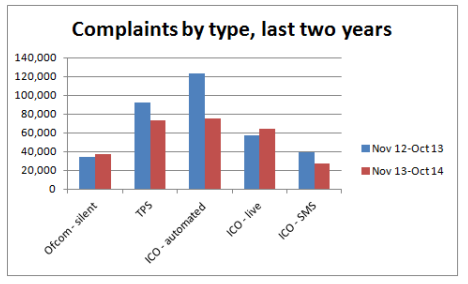
For B2B marketing data, the relationships you create are what give a lead value. There is no good relationship that doesn’t have a foundation of trust.
Fines… Not something you want to hear. The laws aren’t actually enforced by the telephone preference service. They are handled by the ICO. The ICO is the Information Commissioner’s Office.
It is not just the monetary impact that a fine can have on a business. If you do break TPS or CTPS protocol, your reputation will be damaged. When companies end up in legal trouble and find themselves with hefty fines, it can be very public. There are often publications of articles explaining what companies have done and the punishments.
It is not scary if you invest in quality B2B marketing data. If you invest in a reputable provider, your data should already be TPS and CTPS checked. However, it is important to remember to keep on top of it with data cleansing as we looked at before.
How to Avoid Trouble
Any B2B marketing data that you handle should be screened against the TPS and CTPS register. You must have the data screened before making any calls to numbers on the data list. As mentioned before, your data needs to be screened every twenty-eight days. This is because any number that’s registered on the TPS or CTPS register, has a cut-off for unwanted calls. Newly registered numbers should stop receiving unwanted calls within twenty-eight days. Therefore, your data could change and need to be removed in that period.
The ICO
As we saw above, the ICO is where all marketing data suppliers must be registered. The Information Commissioner’s Office is in control of the protection of data in the UK. This organisation is responsible for taking action when there is a breach in data protection. It is a non-departmental public body for the UK that reports to Parliament.

Action is taken regularly against companies that fail to comply with GDPR laws. We can look at some examples of where there have been breaches of data protection because they are made very public. As explained, when companies break the law, they will not only face financial and legal consequences, but also public repercussions. A reputation of a business can be quickly destroyed if it is found breaking privacy laws.
The companies that have been named and shamed have broken that level of trust with their customers. Anytime data is not GDPR compliant, a company runs the risk of never returning to having a good brand image.
ICO Case Studies
There are plenty of case studies to look at across the years from companies the ICO has prosecuted. We will look at a few of the most recent ones here. The four mentioned below will all be linked, so you can access the ICO website where the cases are published.
You can visit the ICO website to see the different examples of businesses that have been caught and prosecuted. Find recent cases under the Action We’ve Taken page on the ICO site.
Home2sense Limited
The first is an investigation that went into the brand Home2sense Limited’s actions. We have looked at this example before on our blog. Read our article here for the complete guide to B2C Data in 2022. We will look at it again here because it is one of the most recent cases. It took place in February 2022.
The company was carrying out unsolicited marketing calls. Home2sense Limited was making these calls to market and sell its insulation services. This was a breach of data protection laws because the numbers were registered on the TPS. These calls were made between June 2020 and March 2021. Across that time period, nearly 700,000 calls were made.
Several people notified the ICO and a total of 60 complaints were made. The type of punishment was monetary penalties, which ended up being £200,000. You can access the ICO’s publication of this case here.
Halfords Limited
An even more recent case study is of Halfords Limited. This penalty was issued as recently as the 6th of September 2022. The company also made unsolicited marketing calls so was given monetary penalties. Halfords Limited had not made quite so many unsolicited marketing reach outs. It used unsolicited email marketing rather than telemarketing. But the company made 498,179 unsolicited emails, unlike the 675,478 unsolicited calls the Welsh company Home2Sense Ltd made. Halfords Limited received a fine of £30,000.
There were complexities to this case, however. The unsolicited email was found by the ICO to be unable to rely on a legitimate interest to send the emails. This is because the customers had not opted in to receive emails from Halfords. To anyone who doesn’t interact with the jargon of data protection on a regular basis, this might seem quite confusing. This is why it is even more important to be absolutely sure that you are being lawful. It might be easier than you expect to accidentally handle data unlawfully.
To read more about the ins and outs of the case and the soft opt-in exemption involved, read here.
Seaview Brokers Ltd
Another example is the company Seaview Brokers Ltd. This breach of data protection was in the form of unsolicited marketing calls. Seaview Brokers Ltd made 4,737 of these calls for direct marketing purposes.
This took place between the 1st of June 2020 and the 30th of June 2020. It was published on the 16th of March 2022, that a fine of £15,000 was given.
The Chichester, West Sussex-based company was targeting vulnerable and elderly people. It is believed that the data the business used was bought without carrying out due diligence. This means that Seaview Brokers Ltd failed to carry out its job to make sure the data provided was compliant. Seaview Brokers Ltd failed to check that the provider could give evidence of consent for direct marketing.
As well as the monetary penalty, the company was given an enforcement notice by the ICO. To read about this case on the ICO website, click here.
Your Home Improvements Ltd
Yet another investigation took place into another company for breaching data protection laws. The ICO fined the company Your Home Improvements Ltd in 2021. It was to be paid at the latest on the 19th of October 2021. The fine could be paid by either BACS
transfer or cheque by that date, to the ICO.
Your Home Improvements Ltd was found to have made 1,718 unsolicited marketing calls. They were made to numbers that were already registered on the telephone preference service. Four complaints were made not only to the ICO but also to the TPS itself.
The fine itself amounted to £20,000 which is a considerable amount. It shows that it’s not just the number of unsolicited contacts that a business makes that results in higher penalties. However, it was agreed that if the Commissioner received the full payment of the fine it could be reduced. It had to be paid by the 18th of October 2021 to be reduced.
This can be the case. It was agreed that if the monetary penalty was paid on time, it would be reduced by 20%. Taking the fine from £20,000 to £16,000, so long as the company didn’t appeal. Of course, the company did have the right to appeal to the First-tier Tribunal. If they decided to exercise the right to appeal, the offer of a fine reduction was to be taken away.
The ICO’s publication of the case of Your Home Improvements Ltd can be found here.
USA: Federal and State Legislation
Data protection is an ever-changing set of guides. This is because we are learning about more risks to our privacy, but we are also becoming more accessible. Our data is growing and becoming more digitalised. Different countries have different rules to set out how to protect data.
GDPR covers countries in the European Union and the European Economic Area. Even though the United Kingdom is no longer part of the European Union, it still must follow GPDR guidelines. This is because the UK was a part of the EU when GDPR was introduced and enforced. For a list of all countries that must follow GDPR, see here.
The enforcement of GDPR gives individuals the right to be informed, have access to, reject and delete data held of them.
The United States of America doesn’t have to follow GDPR rules internally, so instead has its own guide, despite this, any company that processes the data of EU data subjects will be required to follow GDPR rules. It is not quite as simple in the US as it is in the EU. Without one set of rules like GDPR, rules fall into different legislations and laws. Understanding the ins and outs of data protection in the US can be far more complex. It is difficult to get a grasp on, but it is just as crucial. Especially if you ever want to use B2B marketing data (or any data) from the US.
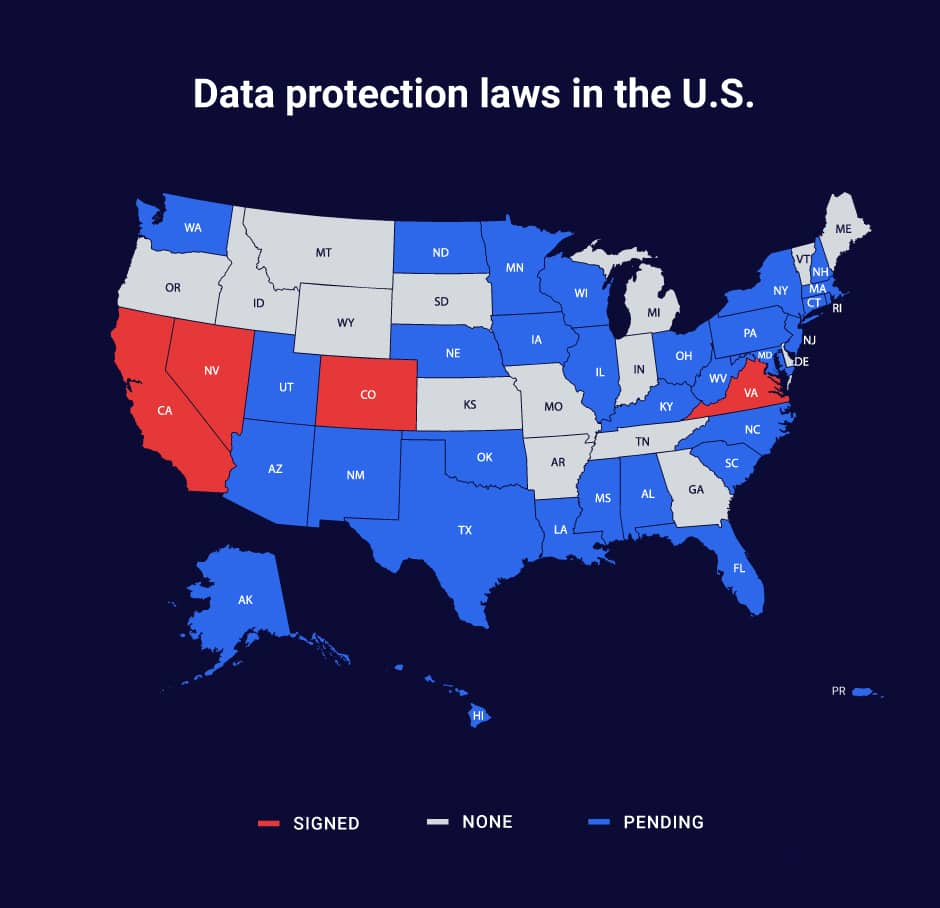
As there are so many American laws and regulations surrounding data protection, we’ll look at some of the key ones.
A similar set of guidelines in America comes from CCPA. This stands for the California Consumer Privacy Act. The act protects consumers in a similar way to how GDPR does. However, one of the main differences is the reach. Who it can cover is not quite the same. CCPA protects consumers in California. It is a state-wide law that protects data handled across the world. CCPA only protects consumers in California, however it protects them from any business in the world.
The Future of Data Protection In The USA
Our world population is still growing and is expected to keep growing for several decades to come. With more and more data being made and put out into the world, the market will continue to grow. There will be more data to buy and sell and more risks than pop up. So, there will also be more need for data protection. Predicting the future of data protection is difficult but it will certainly stay an important topic in marketing industries. Privacy is something humans will almost indefinitely always value to an extent.
Protecting our privacy will be in the interest of consumers and therefore businesses too. As always, those that use B2B marketing data must keep the consumer at the forefront of their mind. It is believed that the data protection market will grow hugely by 2026. One estimate has put a figure for the market size, at USD 18.96 billion. Data protection is being modelled as a service to move data security into the future.
What Threats Are There?
As technology and artificial intelligence are improving at an extreme rate, computer technology and hacking are becoming an increasing problem. Data is more at risk than ever and it is a tough job to keep up protecting it.
One tool that is used to track and monitor user data is cookies. Cookies are essentially data created by a website server that can be placed on a device. They then track the user’s web activity. This can be useful for a user as cookies can save the data and store it for the next time the user visits a particular site. The stored data will throw up information customised to a user when they visit the site.
However, cookies can be hacked into and stolen. Therefore, risking the privacy of the user’s data.
The global pandemic also had a huge impact on data security. Whilst the horrific impacts of Covid-19 took place on our global health, cyber hackers took the opportunity to strike. Cybercrime like hacking and data theft rose significantly through 2020.
Future Data Protection in The USA
There have been questions raised about the USA’s future in regard to data protection. One of which is the question of whether the USA will adopt the EU’s general data protection regulation or not.
Some believe that one set of guidelines would make data security simpler. Especially as the essence of GDPR is already in practice in the USA. However, others argue that GDPR would never work in the USA. This is due to the expensive impact GDPR consequences can have on a business.
It is very challenging to forecast what data protection will look like for the USA. The scene is ever-changing, so anyone that is interested in US B2B marketing data needs to keep up to date with the changes in the laws, even between states.
Future Data Protection Beyond The USA
Plans in the USA vary from those in Europe. The EU is still working on regulating access to data, post-Data Protection Act 2018. As new threats surface and challenges present themselves, new innovative solutions to data protection are created.
The global crisis of a pandemic also impacted our everyday use of the internet. This has therefore raised the use and importance of data. Furthermore, meaning the course of action for data protection needed to be adapted.
Rules will evolve and be likely to become more strict and penalties could also increase. So, companies will need to keep a watchful eye as rules continue to get tighter surrounding data protection.
